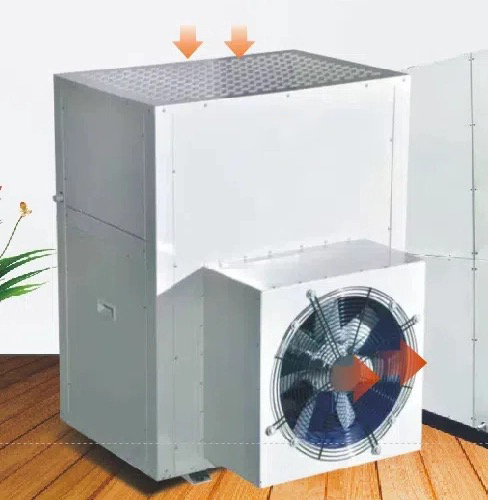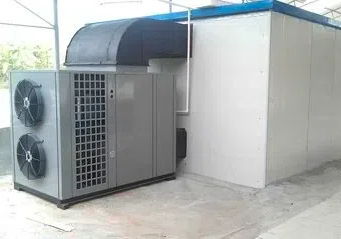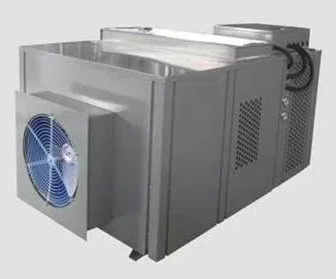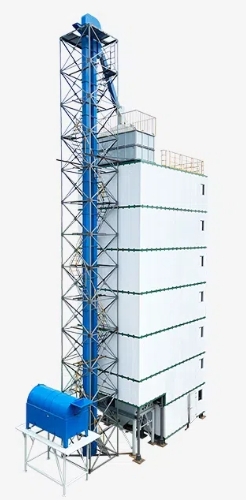
Content Menu
● Introduction: Rethinking Dryer Venting
● Understanding Ventless Dryer Technology
>> How Heat Pump Dryers Work
● Heat Pump Dryer Installation: Simplicity and Flexibility
>> Installation Requirements
>> Ideal Locations
● Energy-Efficient Laundry Appliances: The Heat Pump Advantage
>> Energy Savings
>> Environmental Impact
● Condensing Dryer vs Heat Pump: Understanding the Differences
>> Condensing Dryers
>> Heat Pump Dryers
● Indoor Air Quality and Dryers: The Ventless Advantage
>> Reduced Humidity
>> No External Pollutants
● Heat Pump Dryer Pros and Cons: A Balanced View
>> Pros:
>> Cons:
● Dryer Venting Alternatives: Beyond the Heat Pump
>> Indoor Venting Kits
>> Condensing Dryer Boxes
● Moisture Removal in Heat Pump Dryers: Efficiency in Action
>> Condensation Process
>> Humidity Sensors
● Compact Laundry Solutions: Perfect for Small Spaces
>> Stackable Options
>> All-in-One Units
● Eco-Friendly Clothes Drying: A Sustainable Choice
>> Reduced Energy Consumption
>> Longer Clothing Lifespan
● Conclusion: The Future of Laundry is Ventless
● Frequently Asked Questions
>> 1. Can heat pump dryers be installed anywhere in the home?
>> 2. Do heat pump dryers take longer to dry clothes?
>> 3. Are heat pump dryers more expensive to purchase?
>> 4. How often do I need to empty the water tank in a heat pump dryer?
>> 5. Can heat pump dryers handle all types of fabrics?
Introduction: Rethinking Dryer Venting
In the world of home appliances, few innovations have been as impactful as the heat pump dryer. This technology has revolutionized the way we think about drying clothes, particularly when it comes to venting. The question "Does a heat pump dryer need a vent?" is increasingly common as homeowners seek more efficient and flexible laundry solutions. This comprehensive guide will explore the intricacies of heat pump dryers, their ventless operation, and how they're changing the landscape of home laundry.
Understanding Ventless Dryer Technology
Traditional dryers have long relied on venting systems to expel hot, moist air outside the home. However, ventless dryer technology, including heat pump dryers, operates on a fundamentally different principle.
How Heat Pump Dryers Work
Heat pump dryers use a closed-loop system that recirculates air within the dryer. Here's a simplified breakdown of the process:
1. Warm air is circulated through the drum, absorbing moisture from the clothes.
2. This moist air is then passed through an evaporator, which cools the air and condenses the moisture.
3. The cooled air is then reheated by a condenser and circulated back into the drum.
4. The collected water is either stored in a tank or drained through a hose.
This cycle continues until the clothes are dry, all without the need for external venting.
Heat Pump Dryer Installation: Simplicity and Flexibility
One of the most significant advantages of heat pump dryers is their installation flexibility. Without the need for a vent, these appliances can be placed in various locations throughout the home.
Installation Requirements
While heat pump dryers don't need venting, they do have some basic requirements:
- Adequate space for air circulation
- Access to an electrical outlet
- A way to dispose of collected water (either through a drain hose or by manually emptying a tank)
Ideal Locations
Heat pump dryers can be installed in:
- Closets
- Bathrooms
- Utility rooms
- Even living spaces, where traditional vented dryers wouldn't be practical
This flexibility is particularly beneficial for apartments, condos, or homes where external venting is challenging or impossible.
Energy-Efficient Laundry Appliances: The Heat Pump Advantage
Heat pump dryers are at the forefront of energy-efficient laundry appliances. Their unique technology allows them to use significantly less energy compared to traditional vented dryers.
Energy Savings
Heat pump dryers can use up to 50% less energy than conventional dryers. This efficiency stems from their ability to recycle heat within the closed system, rather than continuously generating new heat and expelling it.
Environmental Impact
The energy efficiency of heat pump dryers translates to a reduced carbon footprint. By consuming less electricity, these appliances contribute to lower greenhouse gas emissions associated with power generation.
Condensing Dryer vs Heat Pump: Understanding the Differences
While both condensing dryers and heat pump dryers are ventless options, they operate on different principles and offer varying levels of efficiency.
Condensing Dryers
Condensing dryers use a heating element to warm air, which is then circulated through the drum. The moist air is cooled in a heat exchanger, causing water to condense. While more efficient than traditional vented dryers, they still consume more energy than heat pump models.
Heat Pump Dryers
Heat pump dryers use a refrigerant system to heat and cool air more efficiently. They operate at lower temperatures, which not only saves energy but is also gentler on clothes.

Indoor Air Quality and Dryers: The Ventless Advantage
The impact of dryers on indoor air quality is an important consideration for many homeowners. Heat pump dryers offer several advantages in this regard.
Reduced Humidity
Unlike vented dryers that can increase indoor humidity (especially if not vented properly), heat pump dryers effectively remove moisture from clothes without releasing it into the room.
No External Pollutants
Since heat pump dryers don't require outdoor venting, they don't introduce outdoor pollutants or allergens into your home – a common issue with improperly maintained vented systems.
Heat Pump Dryer Pros and Cons: A Balanced View
Like any appliance, heat pump dryers have their advantages and disadvantages. Understanding these can help you make an informed decision.
Pros:
- Energy efficiency
- No need for venting
- Gentle on clothes
- Flexible installation options
- Improved indoor air quality
Cons:
- Higher upfront cost
- Longer drying times
- Regular maintenance required (filter cleaning, water tank emptying)
- Potentially smaller capacity compared to some vented models
Dryer Venting Alternatives: Beyond the Heat Pump
While heat pump dryers eliminate the need for venting, there are other alternatives for those who prefer or require vented systems.
Indoor Venting Kits
These kits allow vented dryers to be used indoors by filtering and cooling the exhaust air. However, they're less efficient than heat pump dryers and can increase indoor humidity.
Condensing Dryer Boxes
These devices can be attached to traditional vented dryers to condense moisture from the exhaust, allowing for indoor venting. Again, they're not as efficient as heat pump technology.

Moisture Removal in Heat Pump Dryers: Efficiency in Action
The moisture removal process in heat pump dryers is a key factor in their efficiency and effectiveness.
Condensation Process
As warm, moist air from the drum passes over the cold evaporator coils, the moisture condenses into water. This water is then either collected in a tank or drained away.
Humidity Sensors
Many heat pump dryers are equipped with humidity sensors that monitor the moisture level in the drum. These sensors help the dryer adjust its operation for optimal drying, preventing over-drying and saving energy.
Compact Laundry Solutions: Perfect for Small Spaces
Heat pump dryers are often ideal for those seeking compact laundry solutions. Their ventless design allows for installation in small apartments, tiny homes, or other spaces where traditional vented dryers wouldn't fit.
Stackable Options
Many heat pump dryers can be stacked with a compatible washer, further saving space in compact laundry areas.
All-in-One Units
Some manufacturers offer washer-dryer combos that use heat pump technology for drying, providing a complete laundry solution in a single, compact unit.
Eco-Friendly Clothes Drying: A Sustainable Choice
As consumers become more environmentally conscious, the eco-friendly aspects of heat pump dryers are increasingly appealing.
Reduced Energy Consumption
The significant energy savings offered by heat pump dryers directly translate to a reduced environmental impact.
Longer Clothing Lifespan
The lower operating temperatures of heat pump dryers are gentler on fabrics, potentially extending the life of your clothes and reducing textile waste.
Conclusion: The Future of Laundry is Ventless
Heat pump dryers represent a significant leap forward in laundry technology. By eliminating the need for venting, they offer unparalleled flexibility in installation, improved energy efficiency, and gentler care for your clothes. While they may have a higher upfront cost, the long-term savings in energy and potential increases in clothing longevity make them an attractive option for many households.
As we move towards more sustainable and efficient home solutions, heat pump dryers are poised to play a crucial role in the future of laundry. Whether you're renovating your home, looking for an eco-friendly appliance upgrade, or simply curious about the latest in laundry technology, heat pump dryers offer a compelling solution that's worth considering.

Frequently Asked Questions
1. Can heat pump dryers be installed anywhere in the home?
While heat pump dryers offer great flexibility in installation due to their ventless design, they still require adequate space for air circulation and access for maintenance. Always follow the manufacturer's guidelines for optimal placement.
2. Do heat pump dryers take longer to dry clothes?
Yes, heat pump dryers typically have longer cycle times compared to traditional vented dryers. However, they operate at lower temperatures, which is gentler on clothes and more energy-efficient.
3. Are heat pump dryers more expensive to purchase?
Initially, heat pump dryers tend to have a higher purchase price than traditional vented dryers. However, their energy efficiency can lead to significant savings on utility bills over time, potentially offsetting the higher upfront cost.
4. How often do I need to empty the water tank in a heat pump dryer?
The frequency of emptying the water tank depends on how often you use the dryer and the size of your loads. Many models will alert you when the tank needs emptying. Alternatively, you can connect the dryer directly to a drain, eliminating the need to manually empty the tank.
5. Can heat pump dryers handle all types of fabrics?
Heat pump dryers are generally suitable for most fabric types. Their lower operating temperatures make them particularly good for delicate fabrics. However, always check garment care labels and follow the dryer manufacturer's recommendations for best results.












